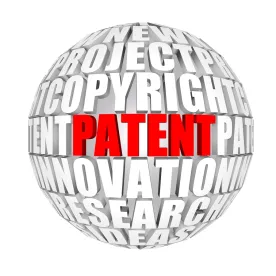On April 24th, the Supreme Court decided two important cases related to the United States Patent & Trademark Office’s inter partes review (IPR) proceedings for reconsidering the prior grant of a patent – Oil States Energy Services, LLC v. Greene’s Energy Group, LLC, No. 16-712 (Oil States) and SAS Institute Inc. v. Iancu, 16-969 (SAS).
By way of background, the IPR is a procedure at the U.S. Patent & Trademark Office (“PTO”) to determine issues of patent validity, and is an alternative to seeking determination of those issues in federal court. In an IPR, a petitioner files a petition with the PTO asking the PTO to institute proceedings to invalidate some or all claims of an already issued patent based on prior art. In response, the patent holder is able to argue the validity of the challenged claims. The PTO’s Patent Trial and Appeal Board (PTAB) institutes or denies institution of the IPR based on the petition and response. Prior to SAS, in some instances, the PTAB would institute an IPR on fewer claims than were presented in the petition and deny institution on the remaining claims in the petition. The PTAB would then issue a final written decision only regarding the patentability of this limited set of claims.
Although anyone can file IPRs, they are most commonly pursued by companies that find themselves on the receiving end of a patent infringement allegation. The IPR process provides a relatively cost-efficient mechanism for determining whether the asserted patent is valid , and often results in resolution of the issues between the parties outside of federal district court litigation.
The IPR process has been incredibly effective both from a results standpoint and a cost standpoint. From September 16, 2012 through March 31, 2018, where a final written decision was issued in an IPR, at least some claims were found unpatentable in 81% of IPRs, with all claims being found unpatentable in 65% of IPRs. Furthermore, the IPR process is a cost effective solution. Rather than the multi-million dollar litigation that often arises in patent litigation cases, an IPR often falls in the $200,000 – $400,000 range. This effective tool is often used as a shield by those parties having an invalid patent enforced against them.
The first of the April 24th decisions reaffirmed the constitutionality of the IPR system. The patent owner in that case had asserted that the IPR process was unconstitutional in that issues of patent validity are handled by an administrative body in the PTO rather than in a federal court, and that patent owners were thus denied a trial by jury. Ruling in favor of Foley & Lardner client Greene’s Energy Group, LLC, in Oil States, the Supreme Court upheld the constitutionality of the IPR process before an administrative tribunal (i.e., PTAB). The Supreme Court rejected arguments that patents are private rights that must be handled by a court. Rather, the Supreme Court decided that a patent is a public monopoly or franchise that is granted by the PTO, and the IPR process protects the public’s interest in seeing that these monopolies are kept within a legitimate scope. Since the Supreme Court identified the rights as “public,” the Supreme Court stated that these rights can be properly adjudicated before an administrative tribunal such as the PTAB. As a result, the Supreme Court rejected arguments that the patent holder is entitled to a trial before an Article III court and a jury trial under the Seventh Amendment.
On the same day, in SAS, the Supreme Court eliminated the PTAB’s ability to decide only a subset of the issues raised by the IPR petitioner. Often times, the PTAB would institute IPRs for only a few of the claims challenged by the petitioner, and would not address the issues raised with respect to the other claims. In its decision, the Supreme Court followed the plain language of the statute that grants the PTO the ability to conduct IPRs. In referencing the statute, the Supreme Court stated that, where an IPR is instituted, the “[PTAB] shall issue a final written decision with respect to the patentability of any patent claim challenged by the petitioner.” As a result, the PTAB must issue a final written decision on all claims that have been challenged in the petition following institution of the IPR. The practical import of this holding remains to be seen, since it would seem that the PTAB’s practice of not addressing certain challenged claims likely telegraphed its view that the challenger’s arguments were not persuasive and that those claims remain patentable. If that is the case, then we would expect that the PTAB will simply make such views explicit in future final IPR decisions.
Now that the Supreme Court has upheld the constitutionality of the IPR process and decided that all challenged claims must be addressed in the final decision, what does all this mean for the future of the patent system? In short, the patent system is only strengthened as a whole.
Businesses have and continue to thrive through innovation. In the Motor City, we see companies of all sizes developing autonomous vehicle technology, researching alternative energy, and everything between. We see these companies continue to expand their patent portfolios because of their research and development in these emerging, exciting technology areas.
These recent cases should only ramp up the ever-moving machine of innovation. Some patent holders may see the Oil States decision as an issue. These patent holders may see the IPR process as a tool that should be removed – “Leave it up to the courts” they may think. But the IPR is a mechanism to reassess and eliminate patents that should have never been issued. That may be seen as unfair to those patent holders who feel disenfranchised because their “rights” are being stripped away. However, looking at the patent system as a whole leads to one logical conclusion – such patent holders were never entitled to those rights in the first place. Oil States can be viewed as an affirmation of this effective tool which ensures certain patents are in fact valid. Some of these “disenfranchised” patent holders are likely the same entities who intend to use their patents in an attempt to financially exploit businesses and other parties.
Furthermore, even patent holders who are faced with an IPR should reap benefits from the April 24th decisions. In particular, SAS ensures that patent holders will receive a final written decision on all claims challenged in an IPR petition. For those claims that were unsuccessfully challenged, the patent holder will be able to point to the PTAB decision as supporting the patentability of their claims. This is a resounding win to patent holders. Instead of a decision not to institute an IPR on some claims (i.e., claims more likely to be found valid), patent holders receive an opinion stating that, despite the petitioner’s position, certain claims are valid over the considered prior art. Patent holders receive all the benefits that such an opinion entails, such as estoppel against that petitioner.
In combination, the Oil States and SAS decisions only shore up the patent system as a whole. These decisions confirm a tool used to verify a patent holder is entitled to the full scope of their monopoly, and where such is the case, the patent holder receives validation of their rights from the very entity that issued their patent. While the future is unknown, these outcomes seem brighter than the headlights of an autonomous, electric vehicle.




 />i
/>i

